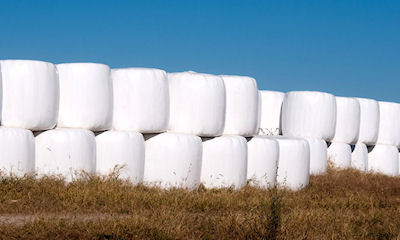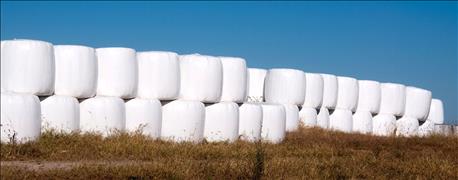June 27, 2015

As wetter-than-normal weather conditions visit the Midwest, a Purdue Extension forage specialist is urging farmers to make sure their hay is adequately dried before baling and storage to reduce the risk of barn fires.
"With all the rain we've been having, some farmers might be tempted to put away hay that is wetter than recommended," said Keith Johnson.
Johnson said the moisture content of hay for storage should be no higher than 20%. If hay is not given enough time to dry or is stored prematurely, heat-tolerant microorganisms can develop in the bales, raising the temperature.
 Wet Midwestern weather has area livestock producers changing hay-making plans
Wet Midwestern weather has area livestock producers changing hay-making plans
If the temperature of stored hay reaches 150 degrees Fahrenheit, farmers should take apart the bales or stacks to allow cooling air to circulate. If the temperature reaches 200 degrees Fahrenheit, a fire becomes very likely.
Set The Schedule For Hay Quality. Deciding when to make the first cutting of hay sets the stage for the rest of the year. Download our FREE report 10 Hay Farming Basics: Producing A Quality Hay Product today.
"Those kinds of fires happen every year, but the wet conditions this year make the risk even greater," Johnson said. "Growers should monitor the temperature of their stored hay and notify their local fire department of any potentially dangerous heat buildup."
Johnson said farmers could speed up the drying by laying the cut forage in a wide swath with a mower-conditioner. Hay cut in a wide swath is more exposed to sunlight and dries faster.
The conditioner crimps the stems of newly cut wheat and allows moisture to evaporate faster.
He said an alternative to storing forage as dry hay is to let the cut forage wilt to 50% moisture content and allow it to ferment to silage.
~~~PAGE_BREAK_HERE~~~
Baleage options
With baleage, forage to be ensiled goes into a plastic bag at high moisture, up to 65%. The big danger in making baleage actually is letting hay become too dry before wrapping, says Rob Kallenbach, University of Missouri Extension forage specialist.
For baleage, cut the forage and roll it into big bales, Kallenbach says. That's similar to making dry hay. Then the bales are tightly wrapped in plastic to seal out oxygen. Inside the oxygen-free package, the forage ferments as in silage-making. Ensiling converts sugars into lactic acid, which preserves forage quality.
"Compare it to pickling," Kallenbach says. "Cattle love baleage. They eat everything, with little waste."
Forage, hay and baleage resources
If you're new to making baleage, try these resources for background and more information.
8 basic steps to make baleage for livestock – Missouri Ruralist
Baleage: A Practical Method for Storing Forages – Farm Progress
6 tips for establishing and managing forage – Beef Producer
You May Also Like




